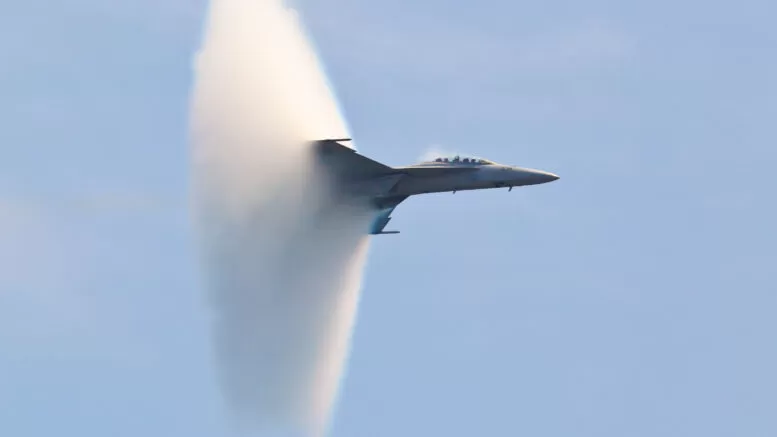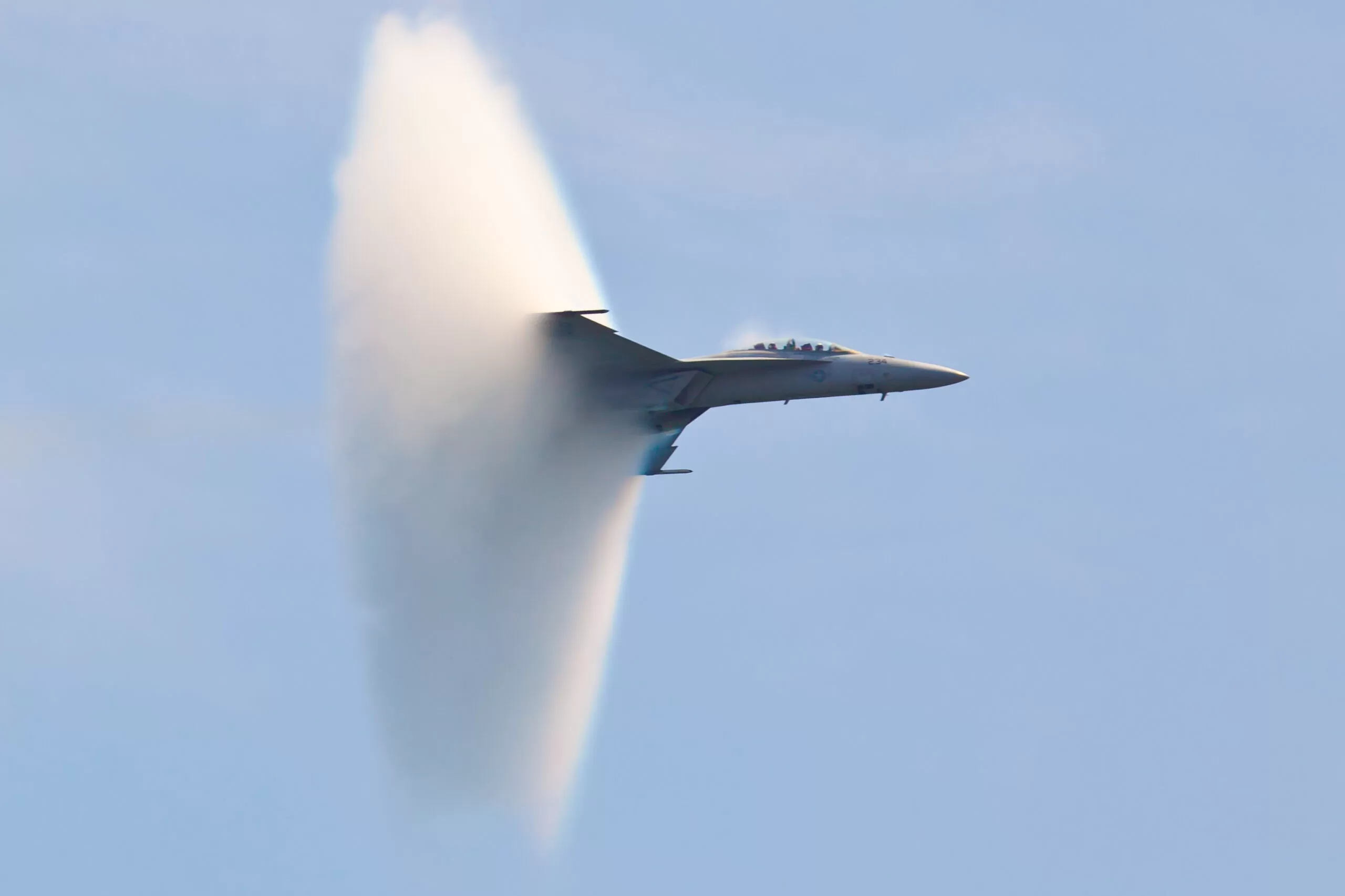When visiting an airshow you might wonder, “Can jets do sonic booms at airshows in cities?” A sonic boom occurs when a jet travels faster than the speed of sound, creating a loud thunderclap that grabs the attention of spectators. However, jets are often unable to do sonic booms at airshows in cities due to safety concerns, noise disturbances, and strict FAA regulations. Not only can the shock wave damage structures, it can startle pedestrians and motorists, too.
Many spectators at air shows are captivated by the maneuvers and aerobatics in the sky, with oohs and ahhs often heard when there is a loud, thunderous boom. This sonic boom happens when aircraft exceed the speed of sound and create a pressure wave.
Yet while many are fascinated with this, questions have been raised over the years about whether they should even be allowed to be part of the performance. This article explores the factors that influence the inclusion of sonic booms at airshows in cities and the consequences of doing so.
What is a Sonic Boom?
The phrase sonic boom gets thrown around a lot when it comes to different aspects of aviation— especially when referring to getting a crowd reaction. But what is a sonic boom? How do they occur? Are they intentional? Let’s dive in and get a better understanding of what they are.
When an aircraft travels faster than the speed of sound in regular atmospheric conditions, the air in front of it is compressed and creates a shock wave that follows behind the jet. As the wave reaches the ground, a loud noise that sounds like a thunderclap occurs.
This is known as a sonic boom. In other words, the aircraft broke the sound barrier.
Are Sonic Booms Dangerous?
It is important to note that a sonic boom is loud and may sound excessive, but it is not necessarily dangerous. It is simply the result of the rapid pressure change. And the faster the aircraft moves past the speed of sound the more powerful the sonic boom will be.
Those that occur at higher altitudes tend to have time to dissipate before they hit the ground whereas the lower the jet, the more intense that it can be.
While they are not the explosions that they seem to be, they can be disruptive and create other issues throughout the community.
Can Jets Do Sonic Booms at Airshows in Cities?
During an airshow, you are not likely to hear any sonic booms. The reason for this is that the pilots are often prohibited from creating them for a few valid reasons.
Safety Concerns
Even though they aren’t considered dangerous, safety is always a concern with sonic booms. It isn’t the loud crack itself that raises eyebrows but the effects of the powerful shock waves on the environment. For instance, when the waves hit the ground, they can cause damage to structures, such as cracking windows.
What’s more, sonic booms have also been known to startle pedestrians and motorists, as well.
Unlike what you encounter in more rural areas, highly dense areas with tall buildings and crowded spaces can amplify the effects of the sonic boom.
Considering these factors, safety concerns include not only the pilots performing the stunts but also the spectators and surrounding areas.
Noise Disturbance
There is no denying that a sonic boom is loud. It is part of the reason why so many people get excited to hear it. Unfortunately, it can far exceed 200 decibels which makes it a noise disturbance to residents and businesses in the area of an airshow.
In the past, it was not uncommon for cities to complain and protest airshows due to the noise pollution they bring. So, to avoid legal issues, creating a bang during the airshow is often discouraged.
Regulations and Restriction
Aside from making a few people unhappy, regulations are in place. The Federal Aviation Administration (FAA) has imposed strict regulations on supersonic flights in urban areas. The goal is to reduce the risks involved with sonic booms and protect both individuals and the environment.
The FAA restricts civilian and military aircraft from flying faster than the speed of sound while in a city or crowded areas. This minimizes the chance of a sonic boom, reduces disruption, and ensures everyone remains safe at the air show.
The Future of Sonic Booms in Airshows
Air show organizers want to get invited back time and time again to continue to perform for the public. To have the opportunity, they need positive feedback from the community. Following rules and guidelines and avoiding sonic booms during a thrilling performance is the best way to get the right reaction.
Pilots make their best effort to control sonic boom events.
What does the future hold? Technology is always changing. Should something new come around that will allow jets to take a supersonic flight without causing any unwanted side effects, air shows could be taken to the next level.
The Airshow at Wings Over Camarillo
A sonic boom may make a statement, but when your air show is top-notch, who needs to hear the thunderclap? At the Wings Over Camarillo Air Show, the pilots do not disappoint.
If you want to experience it yourself, the jets are taking to the sky on August 16-17, 2025. From jaw-dropping aerobatic flights to vintage aircraft, classic cars, and hands-on exhibits, there is something for everyone.
Save the date so that you can get your tickets to the premier air show on the central coast of California.
Conclusion
Jets can perform sonic booms to give the crowd an unforgettable experience at an air show. Unfortunately, due to safety concerns, noise disturbances, FAA regulations, and overall negative impact in urban areas, they are often restricted during the performance.
While spectators at rural air shows may get the rare opportunity to experience a sonic boom, those in populated spaces do not. Safer, less disruptive sonic booms may appear at airshows in cities in the future. Until then, don’t miss out on the rest of the show.
Ready to Soar with Us?


